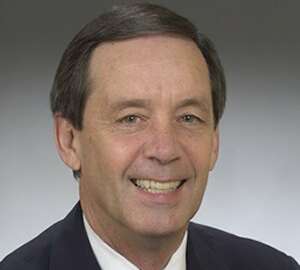
The government is not a business, so why should it act like one
Now the government has new programs to launch and 1000s of people to hire. But our next guest cautioned the public sector should avoid the mistake of trying to act...
Best listening experience is on Chrome, Firefox or Safari. Subscribe to Federal Drive’s daily audio interviews on Apple Podcasts or PodcastOne.
In the last several years, Congress has passed and three presidents have signed into law massive expansions of the federal government. Now the government has new programs to launch and 1000s of people to hire. But our next guest cautioned the public sector should avoid the mistake of trying to act like a business, a piece of advice the government often does get. Bob Tobias is a professor in the Key Executive Leadership Program at American University. He spoke with the Federal Drive with Tom Temin.
Interview transcript:
Tom Temin: And I’ve heard this and you’ve heard this so many times over the years, government needs to be more like a business. And I guess that’s true, but it’s also not true, correct, Bob?
Bob Tobias: Yes, I think that’s exactly right. We hear these calls, the government should be run like a business. But I don’t think it’s possible. And I don’t think it’s possible because the public sector measures efficiency in entirely different terms than the private sector. And Jim Collin,s who wrote “Good to Great,” very famous for writing “Good to Great,” also wrote something that received not much attention, it’s called” Good to Great in the Social Sector. And he says, quote, “We must reject the idea, well intentioned, but dead wrong, the primary path to greatness in the social sectors is to become more like a business.” Now, what he says is that in the private sector it’s very easy to measure success, dollars in dollars out. Very, very easy to measure success. In the public sector, its dollars in. But the measure of success is mission accomplishment, something that no one agrees on. Congress might have a different idea, the President might have a different idea, OMB might have a different idea. And so this idea, saying run like a business, the measures are entirely different. And I also think that the structure of leading is much different in the federal government than in the private sector. Because in the private sector, businesses bury mistakes. If there’s a cost overrun on technology, it gets buried or at best, it’s in a footnote. In contrast, public sector leaders are subject to GAO, inspector general and Congressional oversight investigations. They’re subject to social media and newspaper and cable television criticism. And of course, there are well-funded stakeholders who lobby public sector leaders at every step of the process.
Tom Temin: Let me just challenge you on one point here, too, and it’s true, there’s a great deal of accountability structure built into government. But is there really and I’m thinking of, say, one of the big programs launched in the early days of the pandemic. Payroll Protection Plan, lots of well-intentioned money in the government wrongly measured how fast they got it out, which was really a measure that Jim Collins would not approve of, because he would approve of measure more like what it did do for the employment levels, but now we’re finding hundreds of billions of dollars were fraudulently or just mistakenly expended in that way. And so we have this knowledge. But will anyone lose their job like they would in business? Or can we point the finger at how this happened? So in some ways, the accountability doesn’t go all that far, necessarily?
Bob Tobias: Well, I think it does go that far. Unfortunately, the people who made those decisions are no longer in the government. They’ve long since departed. And I think you’re right on the mark, about an incorrect measure. The measure that was adopted was how fast can we spend the money, not how well we can spend the money. And there was incredible pressure to get the money out. And it would have taken an incredible leader to stand up and say, hold it, not this week, not next week, six weeks from now we’ll have this program in place, and then we’ll send the money. So in the private sector, the leader could have said that. We’re not going to spend the money until we get everything in place. But at that particular time, all of the pressure, all of the focus was to get the money out. And they did. And now we’re all paying for it. We’re all paying for it as taxpayers.
Tom Temin: We’re speaking with Bob Tobias, Professor in the Key Executive Leadership Program at American University. And I want to get back to that point of measuring the correct metrics for whether government is operating properly. And as you point out, it is really outcomes in the social world that government is serving. In the people that the government is serving. And over the years, government and administrations, several of them have adopted that idea. But it doesn’t seem to quite filter through yet in totality that, yes, you need the disciplines of business, but you need the measurements and metrics that are appropriate to government and I think that hasn’t quite maybe gelled totally.
Bob Tobias: Well, I think that’s right, Tom. We do need government efficiency and effectiveness, but we also need measured outcomes. And if you look over the past several administrations, there have been struggles to define outcomes. And if you look at the way each administration has published results, they have moved ever so incrementally toward outcomes. But what’s interesting is that when they go to Congress every year and say, Hey, wait a minute, we achieved our goals. Congress says, so what? We’re either going to give you money or not give you money based on political considerations, not on organizational success. In the private sector, organizational success means bonuses and stock options. In the public sector, it doesn’t really matter as Congress considers the budget process. So the incentive to do outcomes isn’t supported by Congress.
Tom Temin: Right. And that points to two issues that the government deals with uniquely versus the private sector. One is that political leadership overlay that’s ultimately always there. And then the comings and goings of political agents at the agency level, the individual political appointees. That’s one variable that business doesn’t exactly deal with. I mean, CEOs come and go. But, you know, it’s not the same as Congress. And the other issue is that the leadership and the chains of command are often very diffuse in federal agencies. You could have a program manager saying, this is a great thing to do, let’s go ahead. But someone in acquisition or procurement or say, Well, you can’t do that this way, because of such and such FAR Part XYZ. So the diffusion of authority sometimes I think, maybe makes it difficult for government to get its wood behind the same arrowhead?
Bob Tobias: Well, there is the issue of multi-layers in government. And there is the issue in government about decisions made, not on the basis of efficiency and effectiveness, but rather on a political point of view. And so that’s also tough to deal with as a federal leader. And you know, of course, in the federal sector, there is also the constitution that guides federal leaders, which isn’t applicable in the private sector. So federal leaders are, I think, appropriately risk averse. So rather than bold action, I think we see a lot of risk averse action, because of the context in which leaders make decisions.
Tom Temin: So what’s the way forward here for the next 100 years?
Bob Tobias: Well, I think the way forward is a more assiduous approach to measuring outcomes. Because even if Congress doesn’t value outcomes, a president and the executive branch ought to value outcomes because they’re responsible for delivering efficiency and effective mission accomplishment to the public. So I believe, if they truly were serious, and kept moving more assiduously forward, it would have a very positive impact on the federal government.
Tom Temin: Bob Tobias is a professor in the Key Executive Leadership Program at American University.
Copyright © 2025 Federal News Network. All rights reserved. This website is not intended for users located within the European Economic Area.
Tom Temin is host of the Federal Drive and has been providing insight on federal technology and management issues for more than 30 years.
Follow @tteminWFED




